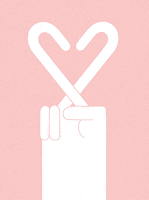Maxime Francout is a french illustrator/artist/designer. He is still a student at the Université du Québéc in Canada but has developed a very professional portfolio and has already worked for some big company names such as Toyota and Urban Outfitters.
Francout has a wide stylistic range and his work spreads across many mediums which suggests that he doesn't want to get tied down to a particular style or medium. Barthes speaks in his text 'The Death of the Author' about how the creator of an artefact can be considered as a "father to his child" meaning that an illustrator has a direct link to a certain kind of work in the eyes of the viewer. This connection shouldn't really be made, after all a father and son are two entirely different people, the only connection being that one created the other, the same connection an artist has with his work.
In Steven Miles' 'Consumerism as a Way of Life', Whitely (1993) argues that business strategies have changed from focussing on the effectiveness of the product itself to to focussing on "a continual stylistic change in order to stimulate sales and profits", in other words, keeping the advertising campaigns moving with the changing trends and styles. For a creative looking for employment, this shows that it is key that you have the ability to work in different ways and proves why it could be a hindrance if you are connected too strongly to a style which then becomes out of date.
A feature by AIGA about Francout lists some names his work is reminiscent of or inspired by; these include poster artist Raymond Savignac and the textile works of Alexander Girard. The fact that Francout's work has strong connections to other practitioners proves Barthes' point that nothing created is original. Barthes describes a line of text as "a multidimensional space in which a variety of writings, none of them original, blend and clash." This explains that all work created is formed from existing ideas. These ideas will "blend and clash" in ways to create things that seem new, but the components of the work will have existed long before this creation.
Francout says "humour has always been a good way to get by in life and I think it shows in my work too" which tells us that he puts his personality into his work. Barthes opinions about authorship are controversial but understandable, he writes "the birth of the reader must be at the cost of the death of the author" which tells us that it is the viewer of the artwork who defines what it means, so the practitioner's initial intentions are irrelevant and non existent now the work has been interpreted by someone new. Barthes undermines the fact that practitioners like Francout imbue their own personality into their work because this will be irrelevant to the viewer as they will make their own judgement.
Leading on from this, by saying that "a text's unity lies not in its origin but in its destination", Barthes is telling us that the viewer is the more important party in this artistic process. A lot of Francout's work can be described as abstract. This leaves more room for a variety of judgements and opinions because they are not representational images. In Barthes' terms, this could mean that Francout's work has a higher chance of appealing to more people because it is easier for people to draw their own conclusions about the work to make it relevant to them.
(587 words)
Impressive Illustrations by French Design Student Maxime Francout | AIGA Eye on Design. [Online] Available at: http://eyeondesign.aiga.org/impressive-illustrations-by-french-design-student-maxime-francout/. [Accessed 14 October 2015].
Barthes, R. (1968) 'The Death of the Author', London, Fontana.
Miles, S. (1998) 'Consumerism as a Way of Life', Oxford, Sage.
Whitely, N. (1993) 'Design for Society', London, Reaction Books. |



No comments:
Post a Comment